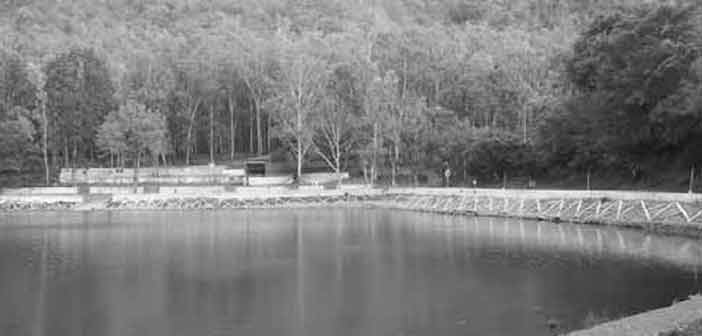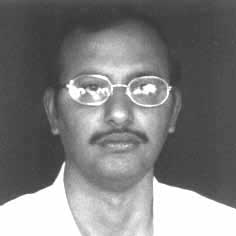Trumpets sounded and beats of drums reverberated as chants of Jai Parshuram and Jai Renukaji rent the air. Carrying colourful silver palanquins of deities, people drenched in devotion danced with religious fervour and joined in the shobha yatra (procession). The palanquin of Lord Parshuram was brought to Renukaji from the ancient temple of Jami Koti village, the permanent abode of the Lord via Dadahu in Himachal Pradesh. It was a long one-and-a-half-hour journey, but never a tedious one. The palanquins were placed in the temple for visitors to pay obeisance. After taking a holy dip in the Renukaji Lake and bathing the palanquin idols in the sacred lake, the saints offered their prayers to the Gods. And the celebration started with pomp and show.
It was the annual five-day long Renukaji Fair, held from November 2-6, 2014, when people from around the world congregated to mark the divine meeting of Parshuram, the sixth incarnation of Lord Vishnu, with his mother Renuka. The banks of the lake wore a festive look as shops of local handicrafts, food kiosks and art exhibits dotted the path. Exuberance was writ large on the faces of the people who watched the cultural programmes, folk dances and religious functions that are the highlights of the occasion. “The fair not just entertains, but also offers a glimpse into the rich heritage of India”, said a tourist Gagan Pandey, who was visiting the place for the first time.
The legend
Legends abound around the fair. The most popular one goes like this: Maharishi Yamdagni and his wife Bhagwati Renukaji meditated on the Tape Ka Tila, a hillock, for many years together. Pleased with their prayers, Lord Shiva blessed the couple with five sons – one among them was Parshuram. His parents named him Ram. Ram was a devotee of Lord Shiva. His ardent devotion impressed Lord Shiva, who gave him a divine weapon Parshu as a gift. And from then on, people started calling him Parshuram.
King Sahastrabahu was killing saints and sages while disrupting their yagnas. He heard of Yamdagni’s affluence and came visiting at their house. Like good hosts, Yamdagni and Renukaji served Sahastrabahu and his army with numerous dishes. The king was stunned at the enormity of the food and asked the rishi about his resources. Yamdagni told him about the Kamdhenu cow, which was given to him by Lord Vishnu. Sahastrabahu asked Yamdagni to hand over the cow to him, but the rishi declined. Sahastrabahu flew into a rage and killed Yamdagni and his four sons mercilessly. Not stopping at this, he also tried to kidnap Renukaji, who plunged herself into the nearby Ram Sarovar. This is today called the Renukaji Lake, which looks like a woman reclining on her side.
When Parshuram, who was meditating in the Himalayas, heard about Sahastrabahu’s brutality, he fought a fierce battle against Sahastrabahu and killed him. He then brought to life his father and brothers with his divine powers. And went to the lake to restore his mother to life. But Renukaji explained to Parshuram that she had taken jal samadhi and would now permanently live in the lake. However, she promised her son that she would come out of the lake to meet him once in a year – on the occasion of Kartik Shuddha Ekadashi. Parshuram also vowed to visit her on the said day every year, while leaving to live a life of solitude in the Mahendra mountain.
A joyous reunion
The reunion of the mother and son thus takes place annually. Mahant Mohanpuri of Sanyas Ashram, located on the banks of the Renuka Lake, said the fair symbolises the profound affection of a mother for her son and a son’s deep regard for his mother. And those who participate in the fair are showered with divine blessings. Having stayed in the ashram for over 28 years, the mahant said, earlier, devotees assembled here for 15 days, but now it is restricted to five days.
Boating in the breathtakingly beautiful lake is a big draw for tourists here. And it sees a giant leap during the fair. Kalyan Singh Thakur, who oversees the boating activities, pointed out that hundreds and thousands of people line up for boating on the five days when the fair is on. However, he voiced concern about the risks posed to the lake which is shrinking slowly. As long as the lake remains untouched by commercialisation, it will continue to delight tourists and attract migratory birds which come from as far as Siberia, Thakur contended. He said even though the Indian military officials and river experts had tried to gauge its depth, they have not been successful.
Besides the Renukaji Lake, there is a smaller lake called the Parshuram tal. There are many temples and ghats around this waterbody too. The place comes alive during the fair, with people making a beeline to have a darshan of the deities. A local, Om Prakash Sharma, who runs a photo studio, said Renukaji is an important pilgrimage centre and it is decked up flamboyantly during the annual fair. The celebration lends a spiritual aura to the entire ambience, he added. Sharma underlined that this year’s fair was the best as the shopkeepers did a brisk business and the tourists thronging the venue enjoyed the festivities. Anil Sharma, associated with Devicos Plaza hotel situated around 5 km from Renukaji, was overjoyed with the constant footfalls. He said, “The hotel was bursting at the seams during the fair. We had to reluctantly refuse accommodation to many people”.
All that started with gusto ended with a heavy feeling as Renukaji and Lord Parshuram bid farewell to each other on the fifth day, with the promise to meet again next year. But it left pilgrims asking for more, as they looked forward to the holy reunion next year.


